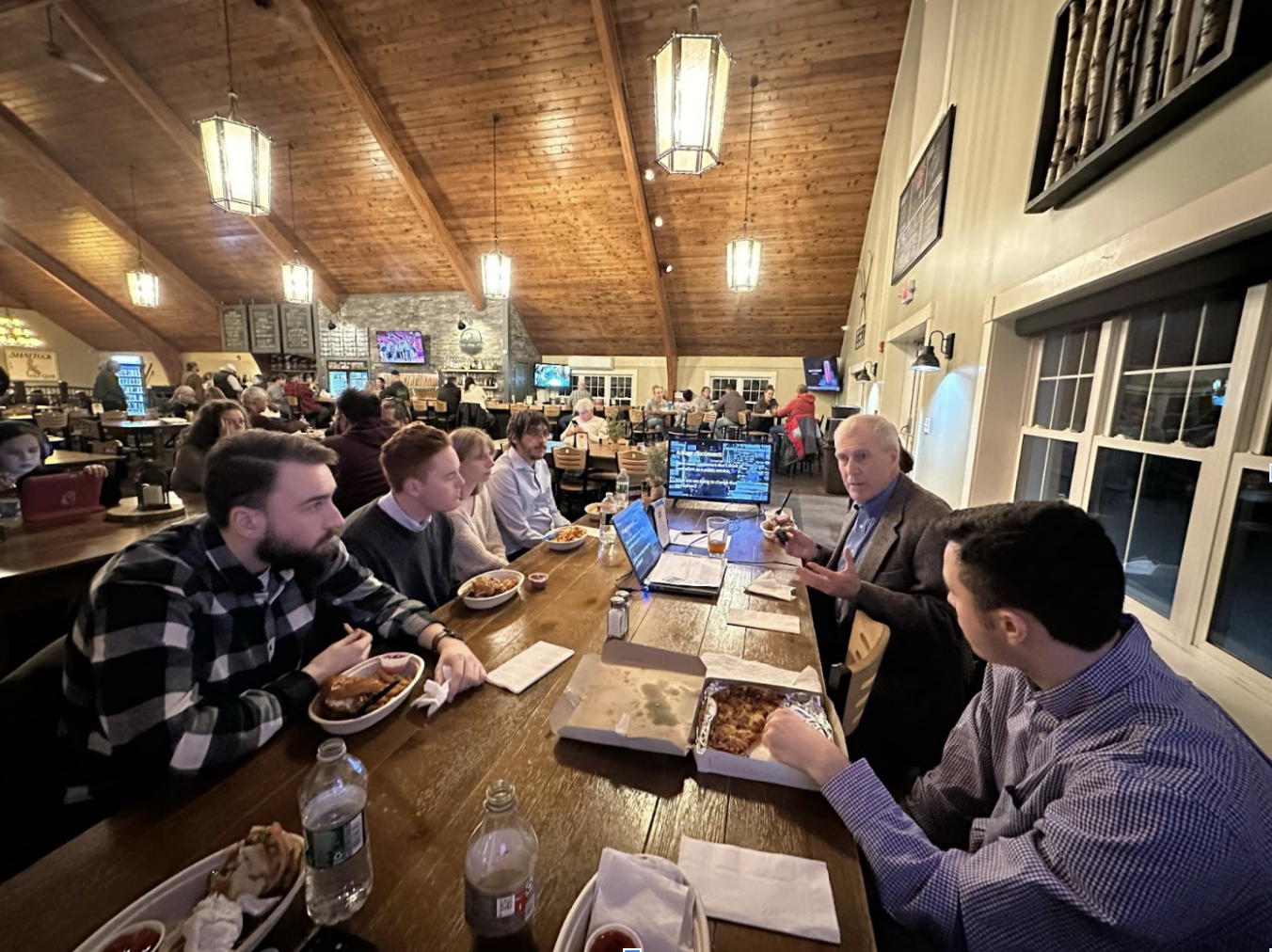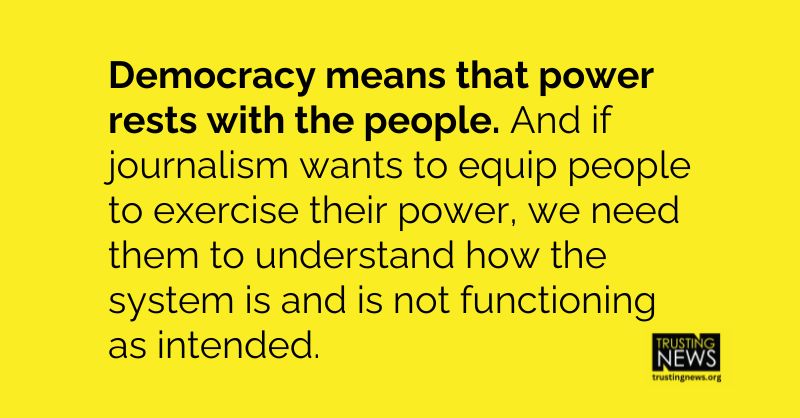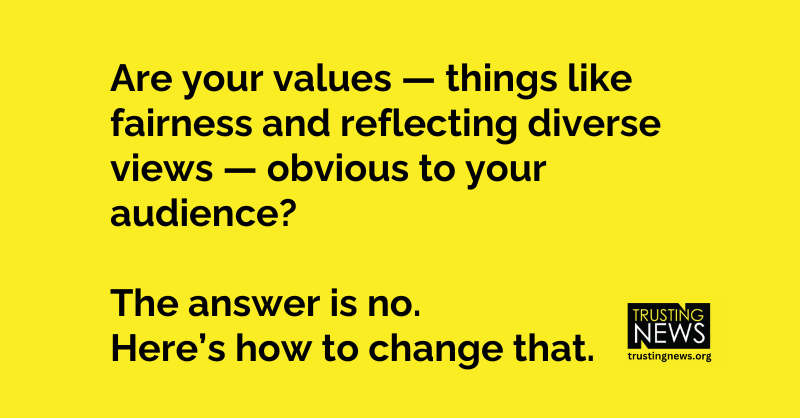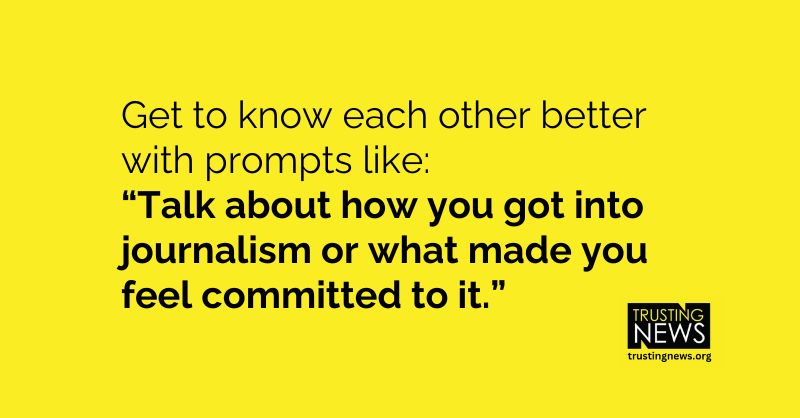
When journalists *know* each other, they produce better journalism. Here are simple ways to help strengthen team relationships.
Build staff connections and respect
Want to get this Trust Tips newsletter in your inbox each Tuesday? Subscribe here.
You know that amazing feeling you get as part of a newsroom team, when people are working together on a huge story? Colleagues know just who to go to for help finding a key source or writing a great headline. They’re helping each other and improving each other’s work. They’re functioning as a team — a team of people who know and trust each other.
That synergy is part of what makes this work so fulfilling. And that spirit of teamwork is a big part of how cultural norms get shared and reinforced.
But it’s too often missing or dormant in these days of remote work and shrinking staffs. Colleagues just don’t know each other as well. They don’t know who covered that big story back in the day, who is well-sourced in a specific community or who’s an expert on a random topic.
When that internal connection and trust are missing, they also don’t know each other well enough to know who to turn to for an insider perspective or a sensitivity read on a complicated or unfamiliar topic. Who comes from a specific faith tradition or has experience with a medical condition? Whose family worked in law enforcement? Who came from a small town and grew up hunting, or has lived overseas? Who has personal experiences they’d be willing to share with the immigration system or the criminal justice system? Whose roots among people with lower education levels can help newsroom conversations from being stuck in elite perspectives?
Who we are as human beings affects how we do journalism. And one of the benefits of being part of a newsroom team is that we can benefit from each other’s experiences.
Take time to be human
As part of our Dimensions of Difference workshops, Eve Pearlman and I bring newsroom teams together — in person or remotely — to connect around the values that shape their work.
Sometimes as we get to know each team, it becomes clear that what they need most fundamentally is to better understand each other as people. How can they grapple together with the nuances of difficult coverage if they’ve never connected as humans?
Of course, not everyone wants to share their experiences growing up with a parent in prison or the medical condition their child has. Some fear that discussing matters of identity will lead them to be tokenized. Some don’t want to invite the judgment they suspect would follow if they reveal specific beliefs. And plenty of people just prefer to keep their private lives private.
No one should feel pressured to share. But newsroom leadership CAN invite people to get to know each other by building a safe container in which sharing can occur. And we’ve seen over and over that connection helps people feel happier in their work and changes the posture they have toward each other. Here’s what one journalist said after a Dimensions of Difference workshop.
“I think what was most useful was just getting together in person and having conversations with one another about ourselves and about journalism. I don’t think we spend enough time doing that, or even enough time getting to know each other, and that’s where most of our tensions come from. I really enjoyed the one-on-one time and small group discussion where I just got to learn more about my colleagues and chat with them.”
Build in points of connection
There are simple ways to establish routines around connection that don’t take too much time. How about pairing people up at the beginning of a staff meeting for a 5- or 10-minute conversation with a specific prompt? That can happen easily in person or in Zoom breakouts.
When inviting people to share, it’s important to ask questions that allow for different approaches and different levels of candor. Some ideas for prompts:
- Share an example of when you’ve felt that your work had meaning and value and why.
- Talk about how you got into journalism or what made you feel excited by or committed to it.
- Talk about a journalist in the office you admire and why.
- Talk about a decision you made in coverage that was difficult but that you’re proud of.
- Describe someone who has been a mentor for you (in a newsroom or out of it).
- Talk about how something in your background influences how you approach your work.
If you prefer to set this up outside of meeting times, we learned from Emma Carew Grovum about a tool that newsrooms she’s worked with have used: a Slack plug-in called Donut that pairs people across different teams for virtual coffee dates.
NEED HELP? If you could use support getting this going, we can facilitate it for you. Check out our Dimensions of Difference customized training options.
MORE AHEAD: We’re going to write more in the next few weeks about how addressing matters of newsroom culture and trust can improve your news coverage. Stay tuned.
Thanks for reading!
Joy Mayer, Trusting News executive director
Sept.16, 2025
At Trusting News, we learn how people decide what news to trust and turn that knowledge into actionable strategies for journalists. We train and empower journalists to take responsibility for demonstrating credibility and actively earning trust through transparency and engagement. Learn more about our work, vision and team. Subscribe to our Trust Tips newsletter. Follow us on Twitter, BlueSky and LinkedIn.
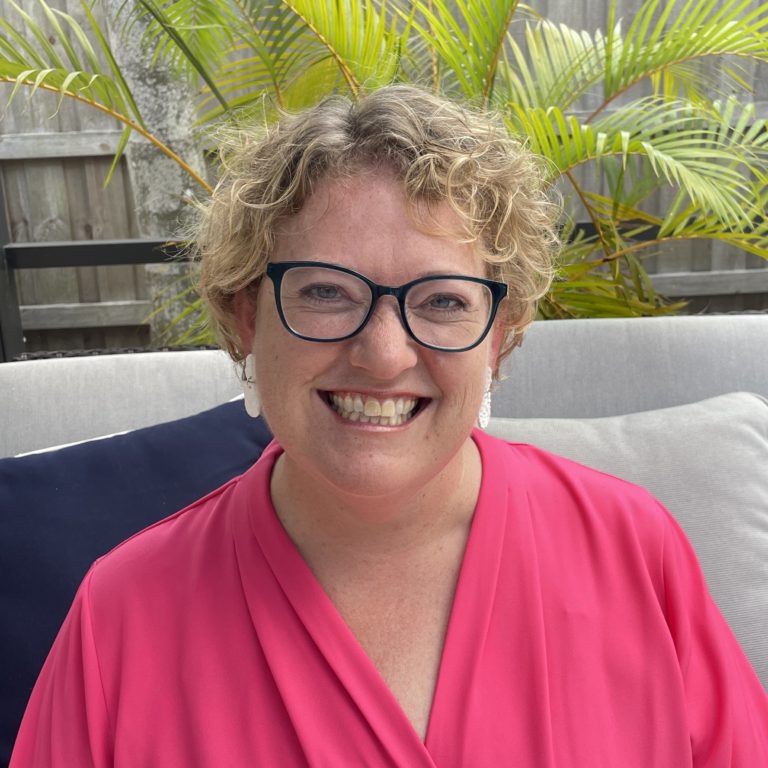
Executive Director Joy Mayer (she/her) founded Trusting News in 2016 after a 20-year career in newsrooms and teaching. She lives in Sarasota, Florida, and can be reached at joy@TrustingNews.org.
